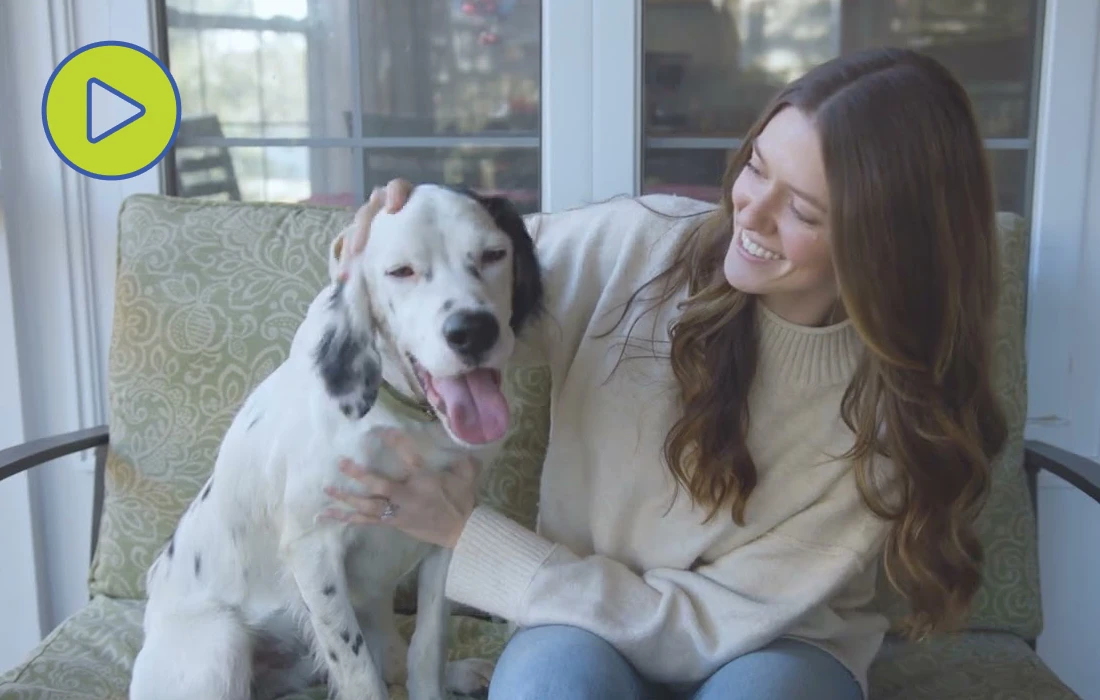Get answers to frequently asked questions about Synovetin OA®
Get answers to frequently asked questions about Synovetin OA®
If your dog has signs such as limping, pain, swelling, reduced mobility, lags behind on walks, it could be arthritis and Synovetin OA could be an excellent treatment option.
Arthritis is accompanied by synovitis, or inflammation of the synovial membrane (the tissue around the joint). Synovitis is a primary source of the pain your dog feels and a main reason your dog is limping. In the image below you can see the inflamed, thickened synovium in the arthritic joint.
Synovitis also drives the degenerative process that leads to ongoing pain, inflammation, destruction of cartilage, and the progression of arthritis.
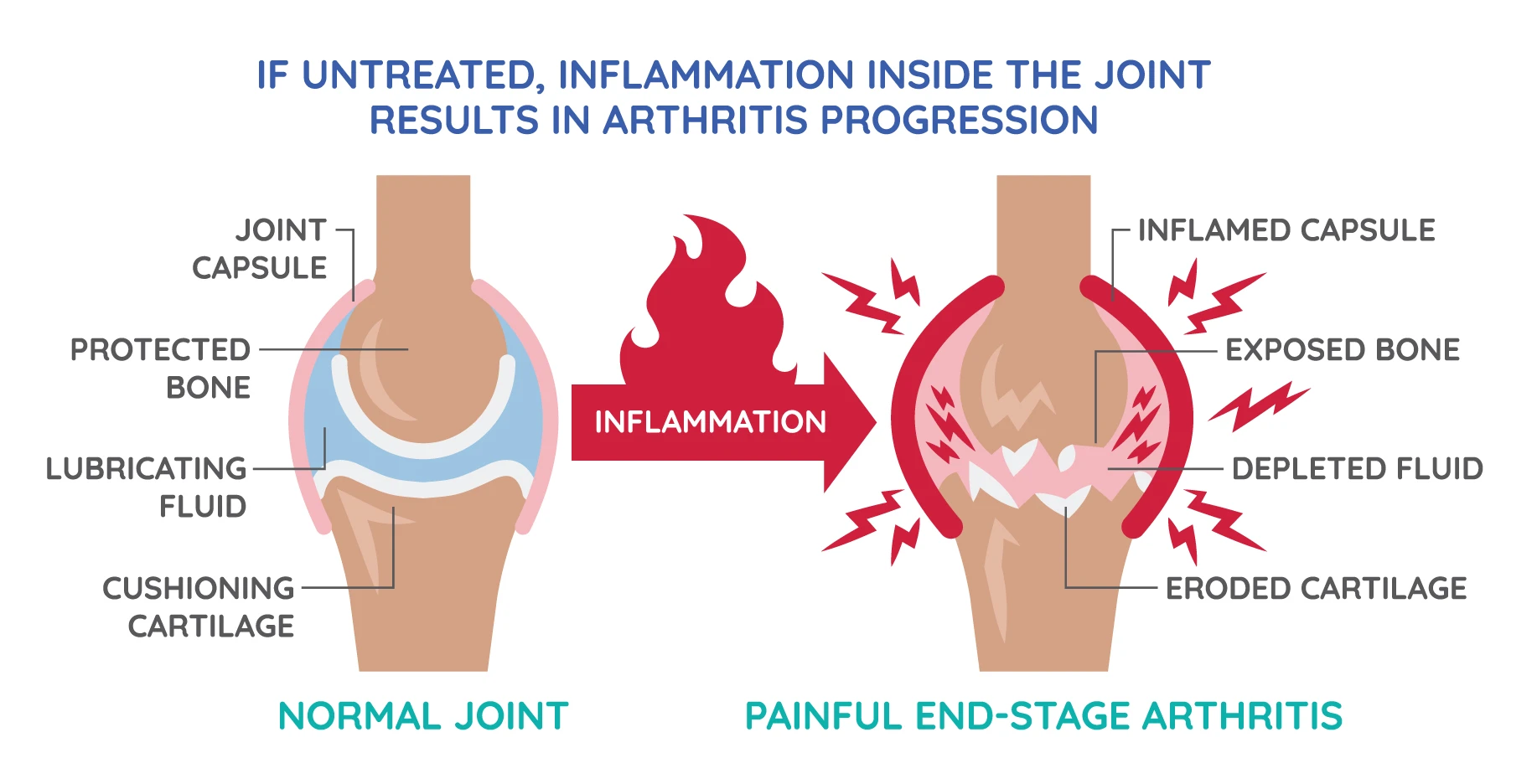
Intervening early in the arthritis disease process by reducing inflammation is critical to providing long-term relief for your dog.
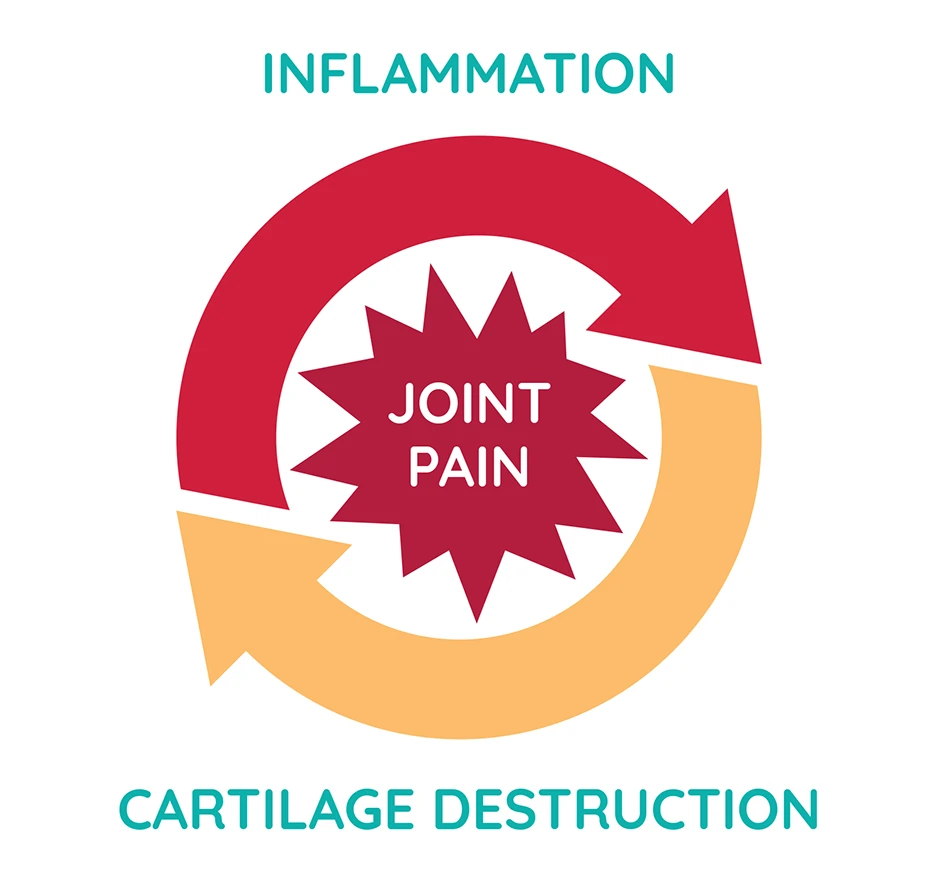 In the joint fluid of an arthritic joint, inflammatory cells drive pain and progression of the disease. Inflammation is the source of pain–where it begins. The inflammatory cells in inflamed joints produce substances that cause even more inflammation and damage to the joint. This is called “the vicious cycle of inflammation” and if left untreated, it causes ongoing inflammation, pain, and damage to the cartilage that lines the joint.
In the joint fluid of an arthritic joint, inflammatory cells drive pain and progression of the disease. Inflammation is the source of pain–where it begins. The inflammatory cells in inflamed joints produce substances that cause even more inflammation and damage to the joint. This is called “the vicious cycle of inflammation” and if left untreated, it causes ongoing inflammation, pain, and damage to the cartilage that lines the joint.
Synovetin OA is different from all other arthritis pain treatments. It is targeted so it focuses directly on the inflammation. Synovetin OA consists of microparticles of tin-117m, a radioisotope with therapeutic properties. Once injected into an arthritic joint, the microparticles are engulfed by harmful cells, which are then deactivated and eliminated.
By eliminating these cells, Synovetin OA breaks the vicious cycle of inflammation, providing long-lasting pain relief with no adverse effects.
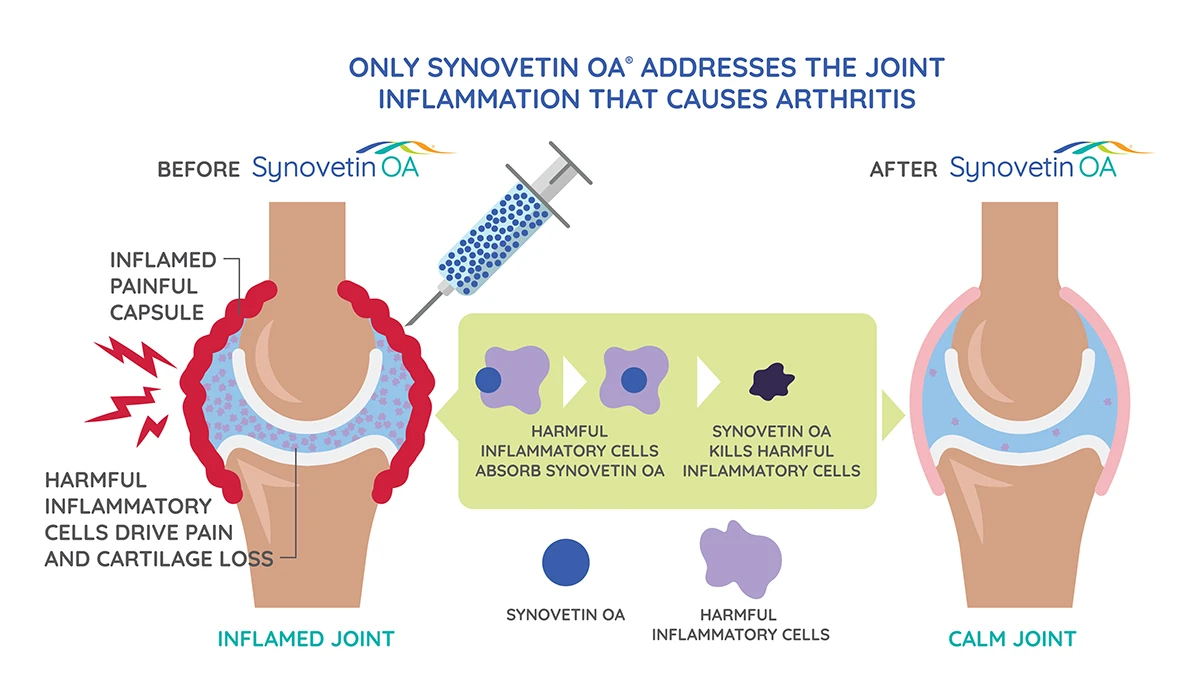
A similar treatment approach to Synovetin OA has been performed in millions of people with arthritis worldwide for over 60 years–safely, effectively, and with very long-lasting results.
Watch this short video to learn exactly how Synovetin OA works.
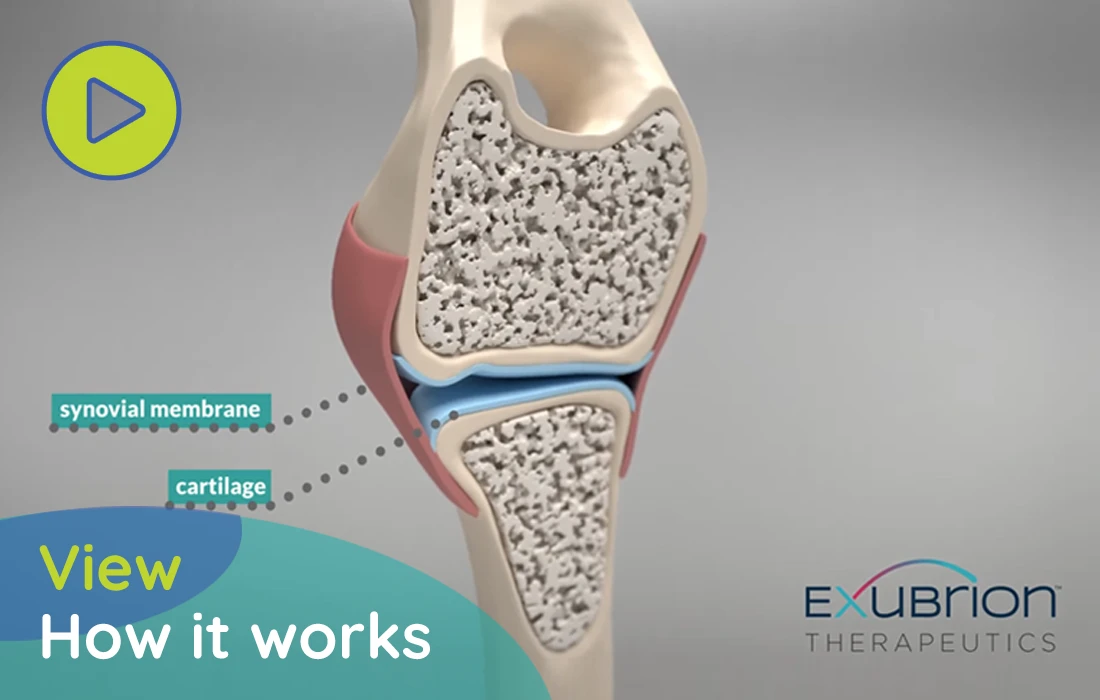
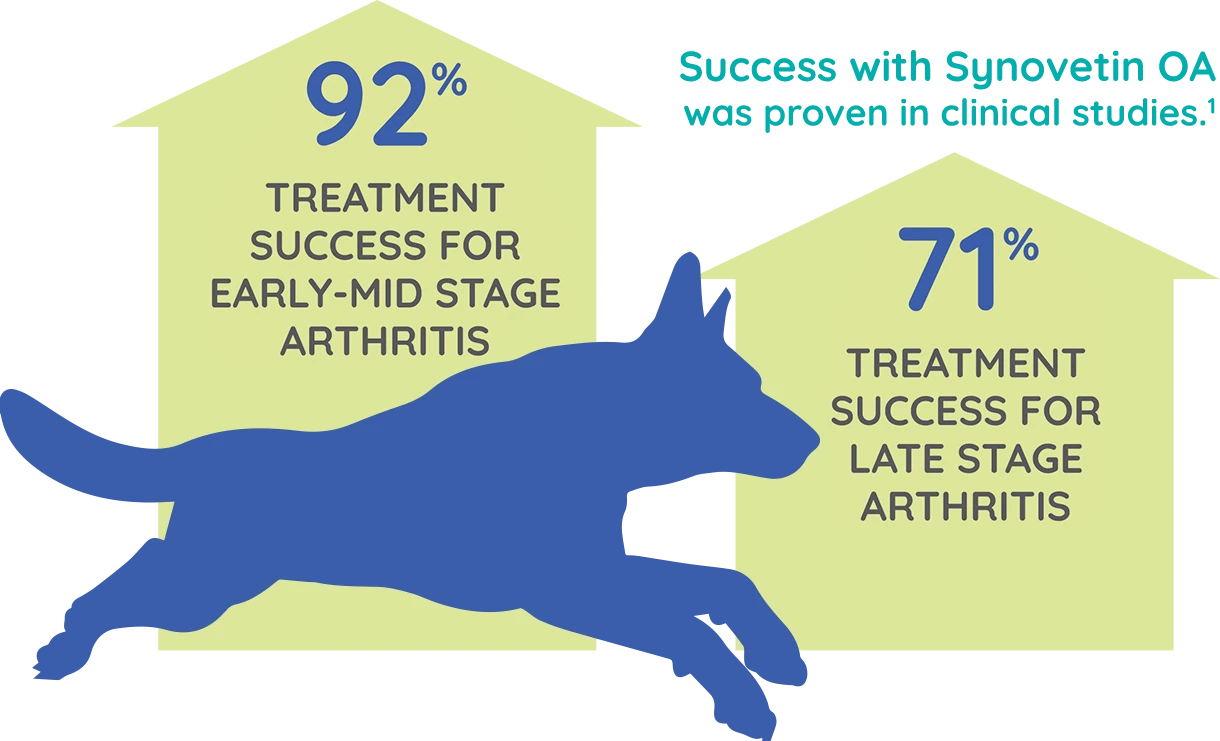 The effectiveness of Synovetin OA was studied in multiple clinical trials of dogs with elbow arthritis. Researchers evaluated Synovetin OA in its ability to relieve arthritis pain in dogs, such as lameness (limping), level of activity, and signs of pain during the year-long studies.
The effectiveness of Synovetin OA was studied in multiple clinical trials of dogs with elbow arthritis. Researchers evaluated Synovetin OA in its ability to relieve arthritis pain in dogs, such as lameness (limping), level of activity, and signs of pain during the year-long studies.
The majority of dogs showed significant improvement after receiving Synovetin OA compared to how well they were able to move before getting the injection. 92% of dogs with mild to moderate OA improved, and 71% of dogs with more severe OA improved. After Synovetin OA was given, the dogs were less lame, in less pain, and had a greater level of activity.
Since Synovetin OA works directly on the inflammation that’s causing the pain and worsening of arthritis, it’s best to start with Synovetin OA as early as possible—as soon as your dog is showing signs.
Synovetin OA has been proven to provide up to 1 full year of pain relief with just 1 simple, safe, easy treatment.
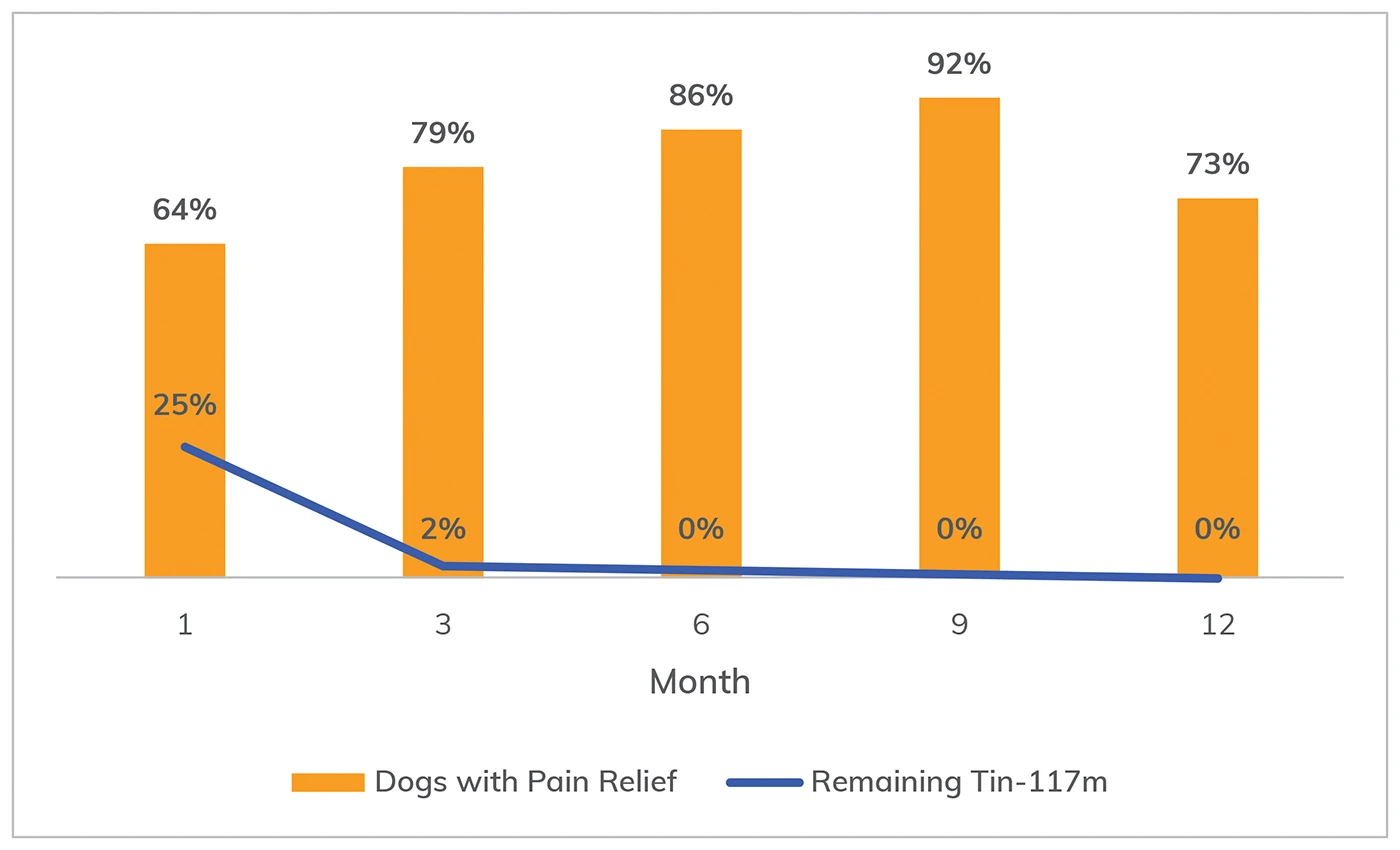 In most cases, you should begin to see improvement in your dog’s mobility within a few weeks, depending on the severity of arthritis. Some dog owners see results almost immediately, while in other instances of severe arthritis, it can be up to 2 months. This improvement should continue over time as Synovetin OA works inside the joint to reduce inflammation.
In most cases, you should begin to see improvement in your dog’s mobility within a few weeks, depending on the severity of arthritis. Some dog owners see results almost immediately, while in other instances of severe arthritis, it can be up to 2 months. This improvement should continue over time as Synovetin OA works inside the joint to reduce inflammation.
The chart below shows the percent of dogs responding to treatment over the 12-month clinical trial.1 The line shows the amount of active tin-117m remaining in the dogs’ joints. So, dogs get very long-lasting pain relief despite the fact that there is no remaining tin-117m in the joint. This is very different from pain drugs that need to be dosed daily or monthly.
Synovetin OA is administered directly into the arthritic joint (called an “intra-articular” injection) where it stays and goes right to work to reduce inflammation. It is a targeted treatment and does not travel throughout your dog’s body like commonly used arthritis drugs do.
Your veterinarian will give your dog a sedative and then inject Synovetin OA. It’s very fast and straightforward. Afterwards, your dog will be released to you and you can return home the same day. The staff will provide easy home care instructions..
Watch the video below to see how Synovetin OA is administered into the joint.
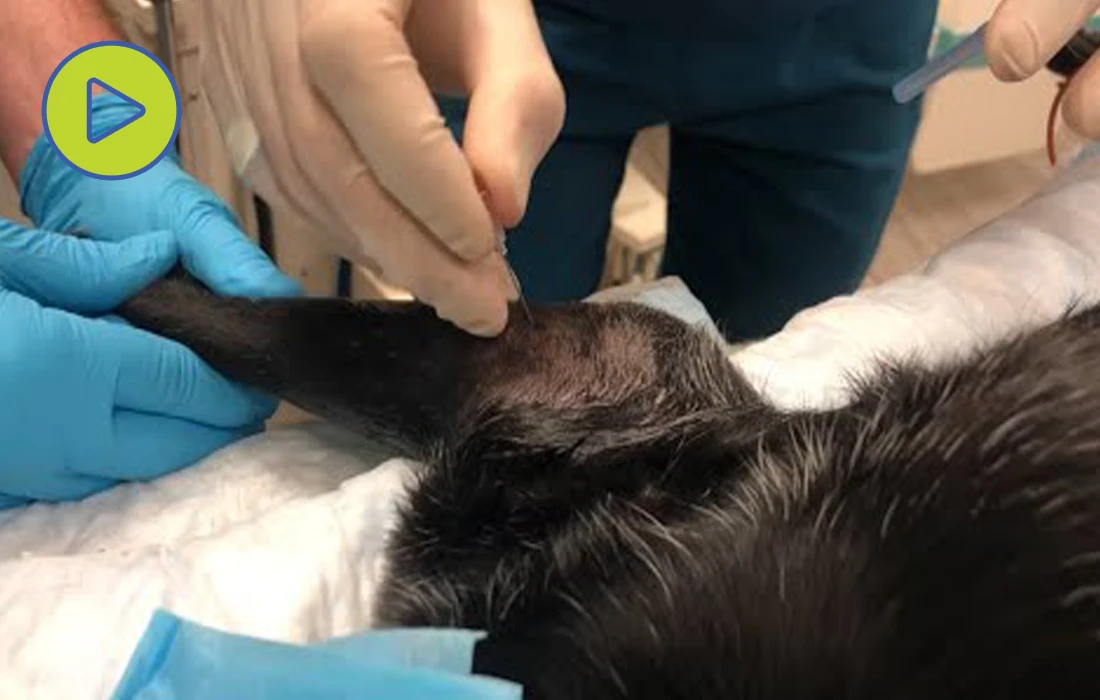
Video compliments of Dr. Matt Brunke, DVM, CCRP, CVPP, CVA, CCMT, Diplomate, American College of Veterinary Sports Medicine and Rehabilitation, Fellow, International Association of Veterinary Rehabilitation and Physical Therapy
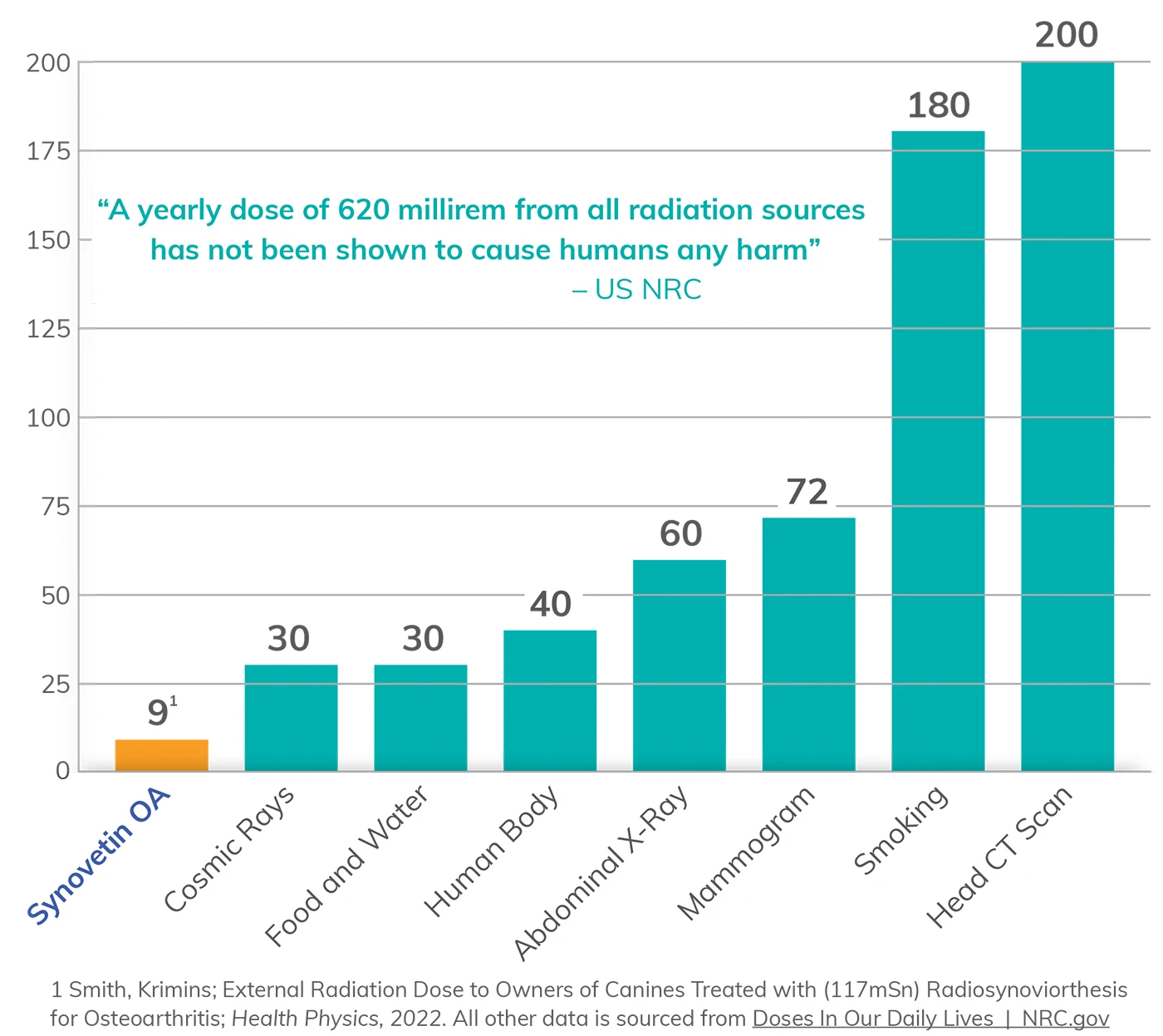 Synovetin OA is a treatment that consists of microscopic particles of the unique isotope tin-117m. These targeted particles emit a form of mild radiation energy that inactivates the harmful cells causing inflammation within the joint and the tissues surrounding the joint (called the synovium) and that drive the loss of cartilage. This activity helps to restore joint health and provides very long lasting pain relief without the systemic side effects that can commonly occur with daily and monthly dog arthritis drugs.
Synovetin OA is a treatment that consists of microscopic particles of the unique isotope tin-117m. These targeted particles emit a form of mild radiation energy that inactivates the harmful cells causing inflammation within the joint and the tissues surrounding the joint (called the synovium) and that drive the loss of cartilage. This activity helps to restore joint health and provides very long lasting pain relief without the systemic side effects that can commonly occur with daily and monthly dog arthritis drugs.
The procedure is called “radiosynoviorthesis” which means “restoration of the synovium using an isotope”. It’s abbreviated RSO.
While Synovetin OA is specifically for dogs, RSO is performed in people with arthritis worldwide, and for over 60 years has provided exceptionally safe, highly effective, very long-lasting pain relief for millions of patients.
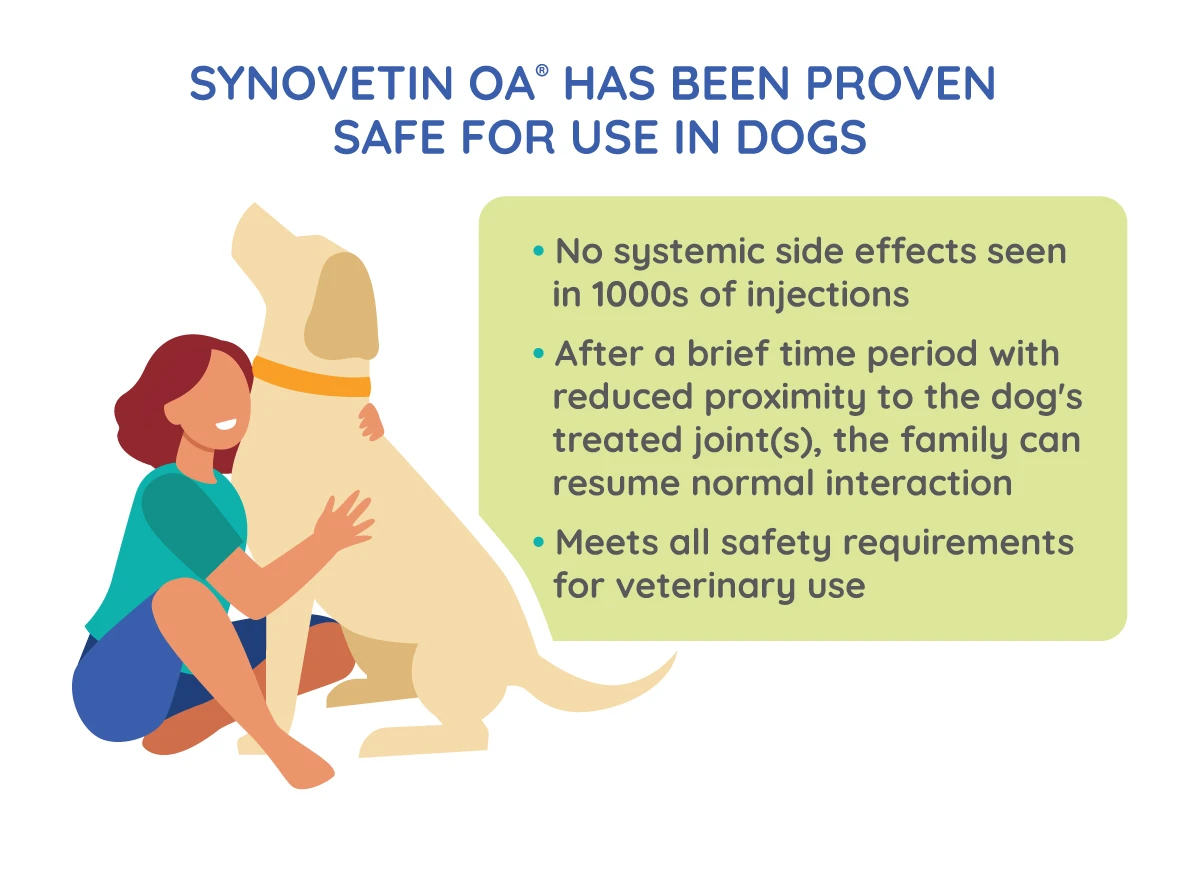 Synovetin OA is administered directly into the arthritic joint where it remains and works locally to eliminate inflammation–the driver of pain and progression of arthritis. It does not travel through the dog’s body and therefore causes no systemic side effects. This is in contrast to pain drugs such as daily NSAIDs or monthly injections, which are metabolized systemically in the dog’s body and have known, significant side effects.
Synovetin OA is administered directly into the arthritic joint where it remains and works locally to eliminate inflammation–the driver of pain and progression of arthritis. It does not travel through the dog’s body and therefore causes no systemic side effects. This is in contrast to pain drugs such as daily NSAIDs or monthly injections, which are metabolized systemically in the dog’s body and have known, significant side effects.
The safety of Synovetin OA has been extensively investigated in numerous studies. Both the researchers and the pet parents of the treated dogs reported that Synovetin OA had no systemic side effects or safety issues. In some cases, it has been reported that pain in the treated joint can occur following treatment that can last up to 3 days following the procedure. Consult your veterinarian if your dog appears uncomfortable after treatment with Synovetin OA.
Today, many dog owners give their dogs multiple treatments to manage pain, including daily pain pills and joint supplements, and injections. Often, some of these medications also require routine monitoring by a veterinarian for side effects. The costs for all this can really add up fast! Plus, the daily process of giving all those drugs can be a real hassle.
Synovetin OA is a convenient way to manage chronic arthritis pain because it provides very long-lasting relief with just 1 simple, safe, non-systemic treatment. The overall cost for Synovetin OA is comparable to other treatments over the course of a year.
Synovetin OA is also covered by major pet insurance providers. Talk with a veterinarian at a Synovetin OA Treatment Center near you for specific pricing for your dog. With Synovetin OA, you get far more convenient treatment that saves you time, money, and hassle.
Synovetin OA works quite differently than NSAIDs and monthly injections. NSAIDs act systemically providing short-term (about 1 day) arthritis pain relief. Monthly injections (like anti-nerve growth factor treatments) are also systemic, can cause adverse effects, and require frequent trips to the vet hospital. NSAIDS and monthly injections simply “mask” symptoms and don’t work on the root cause of arthritis pain.
Synovetin OA is targeted arthritis therapy. It works just inside the painful joint to eliminate the source of pain and inflammation and provides a much longer duration of pain relief–up to 1 full year.
Because Synovetin OA works only in the joint, organs such as the liver, kidneys, and gastrointestinal tract are not involved and are not put at risk. Synovetin OA works at the source of joint pain breaking the vicious cycle of inflammation and thereby providing pain relief up to one year from a single, simple treatment.
After treatment, your veterinarian will provide instructions on how to care for your dog. Your dog may show some signs of joint pain from the procedure, which should resolve in a few days, and your veterinarian may prescribe medicine for this.
You do not need to restrain your dog following treatment. He or she can return to whatever level of activity they’re comfortable with. Be sure to follow your veterinarian’s instructions.
You will also receive easy-to-follow Synovetin OA home care guidelines.
